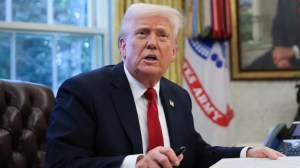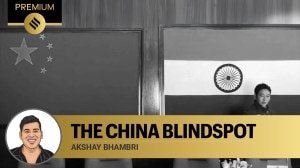Stay updated with the latest - Click here to follow us on Instagram
Fewer girls clearing National Physics Olympiad test
The number of girls appearing for the National Standard Examination in Physics,the first stage of the selection process for the national science Olympiad team in India,has been declining over the years.
The number of girls appearing for the National Standard Examination in Physics (NSEP),the first stage of the selection process for the national science Olympiad team in India,has been declining over the years. This year,of the total students who appeared in the first stage,only 25 per cent were girls and the figure dropped to meagre 5 per cent in the second stage (Indian National Physics Olympiad).
The training for the national Olympiads in physics,chemistry and biology is conducted by the Homi Bhabha Centre for Science Education (HBCSE),Mumbai,and a final team represents the country at the international level each year. The statistics,say experts at HBCSE,reveal the gender asymmetry of females in the highly competitive Olympiads.
Of the 31,000 who appeared for NSEP in physics,only 7,400 were girls. In the second stage,the strength dropped to 14 out of 301. The figures for chemistry and biology this year also present a similar picture. Out of 24,500 candidates in stage one,only 6,500 were girls. The situation worsened in the second test where out of 367 candidates,only 37 were girls. In biology,though the number of female candidates in stage one was more 4,200 out of 7,600 were girls the stage two saw more number of boys 147 boys out of 273 students, said Professor Vijay Singh,national coordinator,science Olympiads. The results of the second stage will be declared in mid-March.
The gender distribution was similar in 2009. In chemistry,for instance,31 per cent girls appeared for stage one,it declined to 12 per cent in stage two. Similarly in 2008,physics saw the percentage of girls dropping from 31 per cent to 7 per cent in and from 32 per cent to 8 per cent in chemistry.
The third stage is the orientation-cum-selection camp where top 35 students are selected and trained at HBCSE. Of this,a team of four to five is selected to represent India at each of the international Olympiads. The scenario is worse when we select the top 35 candidates for the camp. But the data is not very surprising. Since we started sending Indian teams to the Olympiads,only two girls represented the country at the international physics Olympiad as compared to over 60 boys, Singh said. Similarly,in chemistry,only two girls represented India out of 48,and six out of 44 in biology.
Experts at HBCSE say that while there are routine reports of how girls perform better than boys at the board exams like CBSE,the representation of girls is abysmally low in the more competitive exams. A study done by Singh and HBCSE scientist Praveen Pathak indicates that almost all students who did well in the Olympiad examinations went to coaching classes. One could attribute the under-representation of girls to parents who may not be willing to spend money on their daughters coaching classes. Whats more disturbing is that the training and skills required to do well in CBSE appear to be largely irrelevant for Olympiads or other competitive exams, added Singh.







